The weather is getting cooler, but your produce choices are heating up. These amazing foods are hitting their peak this season and can easily be found in your local farmers market or grocery store.
 APPLES: Sweet or tart, apples are satisfying eaten raw or baked into a delicious dish. The phytonutrients in apples can help you regulate your blood sugar. The skin also contains hearty-healthy flavonoids. Apples are full of antioxidants and contain 4 grams of dietary fiber per serving. Harvest season: August-November.
APPLES: Sweet or tart, apples are satisfying eaten raw or baked into a delicious dish. The phytonutrients in apples can help you regulate your blood sugar. The skin also contains hearty-healthy flavonoids. Apples are full of antioxidants and contain 4 grams of dietary fiber per serving. Harvest season: August-November.
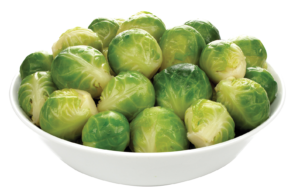 BRUSSELS SPROUTS: They have a mild, somewhat bitter taste. Half a cup of brussels sprouts contain more than your daily recommended intake of vitamin K, which helps promote healthy bones. Brussels sprouts can help lower cholesterol by binding bile acids. They are also a good source of folate and iron. Harvest season: September–March.
BRUSSELS SPROUTS: They have a mild, somewhat bitter taste. Half a cup of brussels sprouts contain more than your daily recommended intake of vitamin K, which helps promote healthy bones. Brussels sprouts can help lower cholesterol by binding bile acids. They are also a good source of folate and iron. Harvest season: September–March.
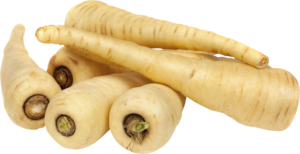 PARSNIPS: Although these veggies may resemble carrots, they have a lighter colour and sweeter, almost nutty flavour. Use them to flavour rice and potatoes or puree them into soups and sauces. Parsnips are rich in potassium and a good source of fiber. Harvest season: October–April.
PARSNIPS: Although these veggies may resemble carrots, they have a lighter colour and sweeter, almost nutty flavour. Use them to flavour rice and potatoes or puree them into soups and sauces. Parsnips are rich in potassium and a good source of fiber. Harvest season: October–April.
 PEARS: The sweet and juicy taste makes this fruit a crowd-pleaser. Cooking can really bring out their fabulous flavour, so try them baked or poached. Pears are a good source of vitamin C and copper, and contain 4 grams of fiber per serving. Harvest season: August–February.
PEARS: The sweet and juicy taste makes this fruit a crowd-pleaser. Cooking can really bring out their fabulous flavour, so try them baked or poached. Pears are a good source of vitamin C and copper, and contain 4 grams of fiber per serving. Harvest season: August–February.
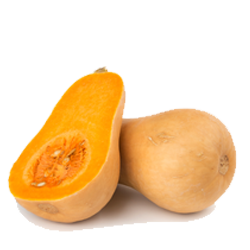 SQUASH: Winter squash has a fine texture and a slightly sweet flavour. Because of its thick skin, it can be stored for months. It tastes best with other fall flavourings, like cinnamon and ginger. Squash is an excellent source of Vitamin A. Squash also has antioxidant, anti-inflammatory, as well as anti-diabetic and insulin-regulating properties. Harvest season: October–February.
SQUASH: Winter squash has a fine texture and a slightly sweet flavour. Because of its thick skin, it can be stored for months. It tastes best with other fall flavourings, like cinnamon and ginger. Squash is an excellent source of Vitamin A. Squash also has antioxidant, anti-inflammatory, as well as anti-diabetic and insulin-regulating properties. Harvest season: October–February.
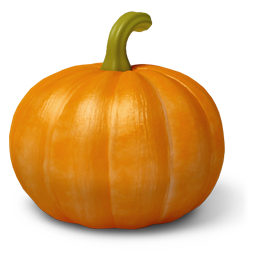 PUMPKIN: A type of winter squash, pumpkin can be used for much more than jack-o’-lanterns. Its sweet taste and moist texture make it ideal for pies, cakes, and even pudding! Pumpkin is rich in potassium and is a good source of B vitamins. Seeds from pumpkins also make a great snack food when lightly roasted. Harvest season: October–February.
PUMPKIN: A type of winter squash, pumpkin can be used for much more than jack-o’-lanterns. Its sweet taste and moist texture make it ideal for pies, cakes, and even pudding! Pumpkin is rich in potassium and is a good source of B vitamins. Seeds from pumpkins also make a great snack food when lightly roasted. Harvest season: October–February.
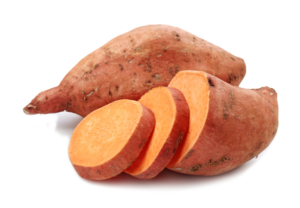 SWEET POTATOES: These veggies are more nutritionally dense than their white-potato counterparts. Try roasting them—they’ll taste delicious, and you may maintain more vitamins than boiling. Sweet potatoes may be one of nature’s unsurpassed sources of beta-carotene and vitamin A. Harvest season: September–December.
SWEET POTATOES: These veggies are more nutritionally dense than their white-potato counterparts. Try roasting them—they’ll taste delicious, and you may maintain more vitamins than boiling. Sweet potatoes may be one of nature’s unsurpassed sources of beta-carotene and vitamin A. Harvest season: September–December.
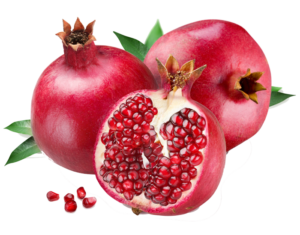 POMEGRANATE: This slightly sour fruit has gotten a lot of press as an antioxidant powerhouse. The juice provides a tangy base for marinades, and the seeds can be tossed into salads to amp up the flavour and aid digestion. Pomegranates are a rich source of vitamin C and help iron absorption.
POMEGRANATE: This slightly sour fruit has gotten a lot of press as an antioxidant powerhouse. The juice provides a tangy base for marinades, and the seeds can be tossed into salads to amp up the flavour and aid digestion. Pomegranates are a rich source of vitamin C and help iron absorption.
Harvest season: August–December.
Eating seasonally has many health and environmental benefits including fresher, more flavourful produce that has higher nutritional value. Bon Appetit!
